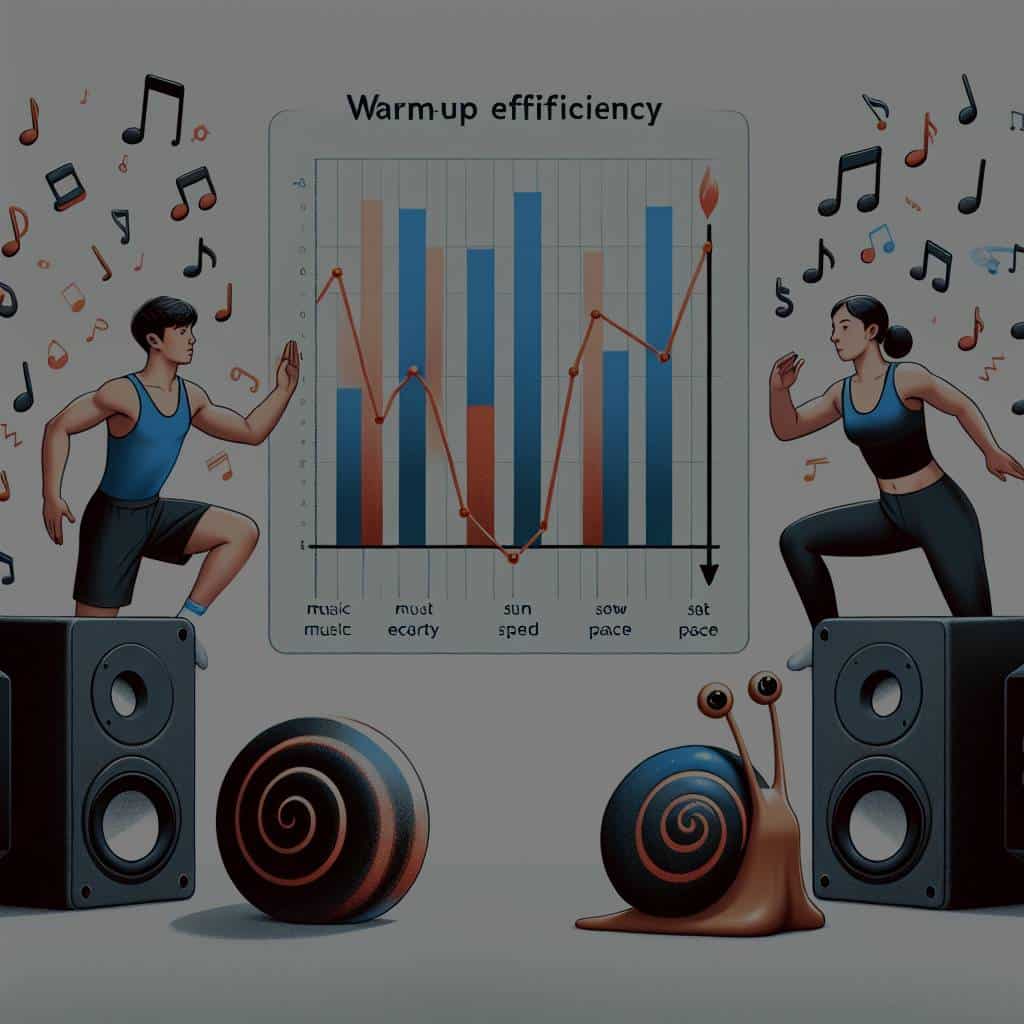What’s the Impact of Music Tempo on Warm-Up Efficiency in Gymnasts?

Let’s dive into a topic that combines the fascinating worlds of music and sports: the impact of music tempo on warm-up efficiency in gymnasts. In the rapidly evolving sphere of sports performance, athletes and trainers are constantly on the lookout for innovative ways to enhance performance and achieve peak condition. One such method involves the integration of music into exercise routines.
The Significance of Music in Exercise
Music has long been a favorite companion of many when it comes to exercise. You’ve probably got your favorite tracks that keep you going during those grueling workouts. But have you ever stopped to consider the science behind this? Studies have shown that listening to music while exercising can have a multitude of benefits.
Topic to read : Which Psychological Techniques Can Help Boxers Cope with Pre-Fight Nerves?
Research published on CrossRef and PubMed indicates that music, particularly with a high tempo, can distract from fatigue, elevate mood, increase endurance, and even promote metabolic efficiency. These effects are not limited to recreational participants; elite athletes can also reap these benefits.
In the specific context of gymnasts, warm-up sessions are crucial. They set the tone for the session or performance to come and a thorough warm-up can dramatically decrease the risk of injury. But what role can music play in this critical part of a gymnast’s routine?
In the same genre : What Are the Best Core Strengthening Exercises for Competitive Horse Riders?
The Influence of Music Tempo on Warm-Up Performance
Different components of music, such as tempo and rhythm, can significantly influence the physiological effects of exercise. In a controlled condition, scholars have conducted studies comparing the effects of different music tempos on exercise performance.
A study available on Google Scholar, with the DOI number easily accessible for reference, investigated the impact of fast-tempo music (120-130 beats per minute) compared to slow-tempo music (50-60 beats per minute) on warm-up efficiency and subsequent performance in gymnasts. The study found that fast-tempo music improved the efficiency of the warm-up and heightened the gymnasts’ readiness for performance.
Why is this the case? Fast-tempo music can stimulate the nervous system, increase heart rate, and enhance arousal levels, all of which can contribute to a more effective warm-up. In contrast, slow-tempo music may have a relaxing effect which might not be as advantageous in a warm-up setting.
Preferred Music Tempo and Individual Differences
While the general consensus points towards fast-tempo music being preferable for warm-ups, individual preferences and differences cannot be overlooked. Some athletes may respond better to slow-tempo music, depending on their personal psychological disposition and the nature of their sport.
For example, sports that require precision, concentration, and fluid movements might benefit from slower music, which can aid relaxation and focus. In these conditions, gymnasts might prefer slow to medium tempo music. This suggests that the effects of music on exercise are not one-size-fits-all and should be adapted to suit the needs and preferences of the individual athlete.
The Role of Music in Controlled Conditions
Music can be an especially powerful tool in controlled conditions, such as indoor sports, where the environment can be manipulated to optimize performance. In such a setting, music can be used strategically during warm-up sessions to enhance physiological readiness and psychological motivation.
However, it is recommended that athletes and coaches experiment with different music tempos to identify what works best. This is due to the individual variance in response to music tempo.
Practical Implications for Gymnasts and Coaches
The findings from these studies have clear implications for gymnasts and their coaches. By incorporating fast-tempo music into warm-up routines, gymnasts might enhance their performance readiness.
However, it’s also crucial to remember the importance of personal preference. What might work for one gymnast might not work for another. As such, it’s worthwhile for each gymnast to explore different music tempos and find their preferred pace.
In conclusion, music tempo plays an integral role in exercise and performance, particularly for sports like gymnastics. Whether it’s fast or slow-tempo music, finding the right beat can make all the difference. So next time you step out to warm-up, take a moment to consider the tempo of your tunes. It could just give you the edge you need.
Individual Responses to Music Tempo
Individual responses to music tempo during exercise can vary significantly. As a matter of fact, not only does the music tempo affect warm-up efficiency, but also the individual’s psychological disposition, their perceived exertion levels, and the nature of their sport can all play a factor.
For instance, some gymnasts may find that listening to fast-tempo music can help them to feel more energized and ready to perform. On the other hand, others may prefer slow-tempo music to help them focus and relax before a performance. This preference can be influenced by a person’s psychological state, with more anxious individuals potentially reacting better to slower music, as it might assist them in calming their nerves.
A study indexed on Google Scholar, PubMed, and CrossRef full text repositories showed that listening to preferred music, irrespective of its tempo, can also significantly enhance exercise performance. In this study, the gymnasts who listened to their preferred music demonstrated improved warm-up efficiency and heightened readiness for performance compared to those who listened to non-preferred music.
Also, the heart rate of an individual can be influenced by the tempo of the music. Fast-tempo music can stimulate the nervous system and increase heart rate, creating physiological arousal that can enhance performance readiness. Slow-tempo music, meanwhile, can have a relaxing effect, potentially aiding in focus and precision movements needed in gymnastics.
Conclusion: Tailoring Music Tempo to Individual Preferences
In summary, the tempo of music listened to during a warm-up can significantly influence a gymnast’s performance readiness. While fast-tempo music generally enhances warm-up efficiency and subsequent performance readiness, individual preferences and responses to music tempo also play a crucial role.
For this reason, it’s essential for gymnasts and their coaches to experiment with different music tempos during warm-up sessions to find what works best for each individual. This could involve testing various music genres, artists, and tracks at different tempos to gauge the participant’s physiological and psychological responses.
As the CrossRef and PubMed abstract of the study we cited suggests, a gymnast’s preferred music could be the key to unlocking their peak performance. Therefore, finding the right balance of music that both motivates and relaxes an athlete can greatly enhance their warm-up efficiency and overall performance.
The role of music in sports performance is a fascinating area of research, with numerous potential applications in the real world. However, as with all things, it’s important to remember that what works for one individual may not work for another. Hence, more extensive research is necessary to fully understand how different factors such as genre, tempo, and personal preference can interact to affect exercise performance.
In conclusion, the impact of music tempo on warm-up efficiency in gymnasts is evident, but the ultimate choice of music should be individualized to suit each athlete’s unique needs and preferences.
